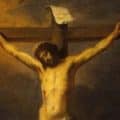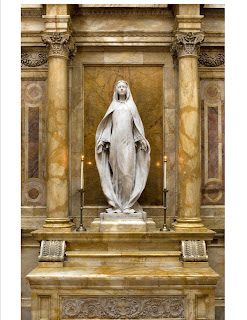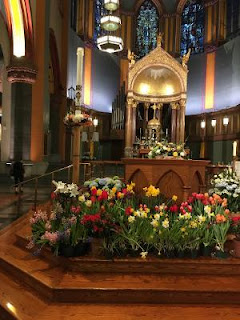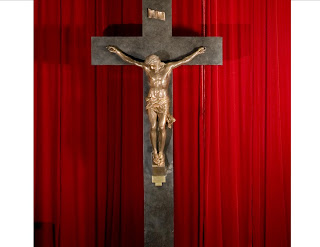My eighth-grade teacher, way back in 1960, used to like to refer to the Immaculate Conception by quoting the English Romantic poet William Wordsworth [1770-1850], who famously addressed Mary: Woman! above all nature glorified, Our tainted nature’s solitary boast.
It was 169 years ago, in 1854, that Blessed Pope Pius IX formally defined the Church’s faith in Mary’s Immaculate Conception – our belief that, thanks to the salvation accomplished by her Son, Mary was preserved from all sin from the very beginning of her earthly existence and thus came into the world completely holy.
Eight years earlier, in 1846, the Bishops of the United States had proclaimed Mary the patroness of the United Sates under the title of her Immaculate Conception. More recently, in the mid-20th-century, the famous American convert-monk Thomas Merton, who was one of the four famous Americans Pope Francis mentioned in his address to Congress in 2015, said that the definition of the Immaculate Conception “was a turning point in the modern history of the Church. The world,” Merton wrote, “has been put into the hands of our Immaculate Lady and she is our hope in the terrible days we live in.” [November 10, 1947]
Why and how all of this matters, what it means for us, here and now, in these terrible days we live in, is what today’s celebration is all about. For starters, the scripture readings we have just heard suggest a comparison between Eve, the mother of all the living, and Mary, mother of Jesus and mother of the Church.
The Old Testament passage we just heard [Genesis 3:9-15, 20] highlights the damage done to the world by our representatives, Adam and Eve, and illustrates the seriousness of sin. Adam and Eve represent us and the damage all of us have done to ourselves and to our world, thanks to our alienation from God. Mary, however, holy Mary, symbolizes and represents the effect of God’s power – and his powerful plan to save us from ourselves.
Calling Eve the mother of all the living celebrated the fact that, in spite of sin, human life continued – the very first sign that God would never give up on us. Of course, the serpent still lives and continues his mischief, but his doom is already certain.
God’s plan for our salvation, the mystery decided upon from all eternity and hidden for centuries, has been realized in Jesus Christ and is now revealed in the life and mission of the Church, as we have just heard St. Paul explain [Ephesians 1:3-6, 11-12].
Mary’s holiness at the beginning of her life is the Church’s holiness at its beginning, even as it symbolizes and represents Church as it will be in the perfect holiness of the world to come.
All of us have been empowered by Christ to share in the Church’s holiness, modeled by Mary. Thus, the Church invites us today to turn our attention to the Annunciation, one of the most famous scenes in all of human history, the centerpiece of Mary’s earthly life from her Immaculate Conception to her Assumption, and the basis for her heavenly life since then as Mother of the Church. At the Annunciation, Mary’s life-long fullness of grace was first formally acknowledged. More importantly for us, at the Annunciation, her life-long fullness of grace led her to answer “Yes” to God’s great plan to save the world with his mercy. For Mary is the living open door through whom Christ comes into the world so that we may enter into God’s kingdom.
Despite my 8th-grade teacher’s generally positive influence, I never took much interest in Wordsworth or his poetry. Being a Bronx boy, however, I could less easily ignore the poet who had once lived just a few blocks away, Edgar Allan Poe, who in 1846, the same year that the U.S. Bishops had proclaimed Mary the patroness of the United Sates under the title of her Immaculate Conception, Poe moved to the small cottage ,which still bears his name, within walking distance of St. John’s College (now Fordham University), where he became friends with the Jesuits and felt the vibrations of the college’s church bells. In his poem, called “A Catholic Hymn,” which references the Angelus, the three-times-a-day prayer to Mary announced by the ringing of bells, Poe prayed Mother of God, be with me still,
Recognizing God’s grace given to Mary leads us closer to her Son and to a better future.
As Poe put it:
Now, when storms of fate o’ercast
Darkly my Present and my Past,
Let my future radiant shine
With sweet hope of thee and thine!
Homily for the Solemnity of the Immaculate Conception of the Blessed Virgin Mary, Patronal Feast of the United States, Saint Paul the Apostle church, NY, December 8, 2023.
Photo: Ecce Ancilla Domini (« Behold the Handmaid of the Lord »), by Bela Pratt, Annunciation Altar, Saint Paul the Apostle Church, NY.





